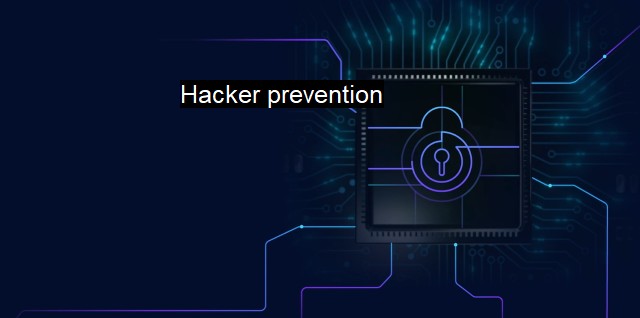What is Hacker prevention?
Hacker Prevention: Safeguarding Against Cyber Threats in the Digital Age
Hacker prevention refers to the confluence of practices, strategies, and technologies utilized to prevent unauthorized access, use, disclosure, disruption, modification, destruction, or distribution of information in digital form in a computing environment. With the burgeoning utilization of digital communication and storage, organizations of all sizes and individuals have become targets for hackers, therefore necessitating reliable systems for hacker prevention.Hackers can exploit vulnerabilities of computer systems, networks, and infrastructures to gain unauthorized access to sensitive data and critical systems. These vulnerabilities can occur due to inadequate cybersecurity protection or inherent system flaws, providing a back door for hackers to intrude. Equipping computer systems with robust cybersecurity mechanisms, including antivirus software, can create formidable barriers for hackers, proactively preventing them from infiltrating systems.
Antivirus plays a crucial role in hacker prevention, actively protecting computer hardware, software, and data from malware such as viruses, ransomware, worms, or trojan horses, that hackers utilize for malicious purposes. These could manipulate or steal sensitive digital information, corrupt data, spur network disruption, and potentially cause significant financial burdens. Antivirus programs offer real-time protection by scanning, detecting, and removing these malware threats from the computer systems.
Nonetheless, antivirus software alone might not be sufficient to ward off all cybersecurity threats, particularly from sophisticated hackers who can disarm or bypass lower-level antivirus defenses. These potential weak points necessitate the integration of antivirus with an all-inclusive cybersecurity strategy pivoting around the principle of hacker prevention.
Such a strategy often espouses a multi-layered approach that couples antivirus with other preventative measures like intrusion detection systems, providing adequate safeguards at various layers of technology infrastructure. They strategically place cybersecurity guards at all potential entry points that hackers might exploit, such as firewalls at the network perimeter to filter and deny malicious traffic and endpoint security systems to protect individual devices.
Another key component of a comprehensive hacker prevention strategy is the implementation of security information and event management systems and the advancement of threat intelligence capabilities. These prioritize the identification of anomalous activities within a system, mapping them effectively against established threat patterns to unveil any potential hacker attempts.
Encryption, another vital element in hacker prevention, converts data into indecipherable blocks, effectively denying hackers access to data, even if they manage to infringe on a system’s security barriers. Regular updates of software applications and operating systems are also crucial because safeguarding against the latest strains of malware and eliminations of system vulnerabilities minimise hackers' opportunities to infiltrate the system.
Lastly, while significant attention goes to technology in hacker prevention, the human element remains a key consideration. Training individuals to identify and resist social engineering methods that hackers often employ and implementing strict access protocols may control unauthorized data access and potential intrusions.
To sum up, while nefarious hackers continue to demonstrate increasing sophistication in their hacking attempts, equipping computer systems with robust, holistic, and up-to-date cybersecurity protocols that integrate antivirus and support hacker prevention is key to ensuring data safety and system integrity. It creates formidable barriers for hackers, neutralizes their efforts, and maintains control over the access and use of sensitive data. Ensuring both human beings and systems alike are 'cyber-ready', up-to-date and informed on the fundamentals and most frontier aspects of hacker prevention and associated threats serves to safeguard computer systems against unwarranted intrusion.
Preventing hackers is an ongoing and evolving challenge in the cybersecurity world where novel threats keep emerging. a proactive and strategic focus on hacker prevention strengthens the cybersecurity posture and resilience of organizations and individuals against these potential security threats.

Hacker prevention FAQs
What is hacker prevention?
Hacker prevention is a set of measures taken to protect computer systems and networks from unauthorized access, cyber attacks, and other security threats. These measures are designed to mitigate the risks associated with cybercrime and to prevent hackers from stealing sensitive information, damaging digital assets, or disrupting business operations.What are some common methods of hacker prevention?
Some common methods of hacker prevention include installing antivirus software, using firewalls, implementing strong passwords, regularly updating software and security patches, engaging in employee education and training, and conducting regular security audits and assessments.Why is hacker prevention important?
Hacker prevention is important because cybercrime is a growing threat to businesses, governments, and individuals. Hackers can cause significant damage to systems and networks, steal sensitive information, and disrupt business operations. By implementing effective hacker prevention measures, organizations can reduce their exposure to these risks and protect their valuable assets.What are some effective antivirus programs for hacker prevention?
There are many antivirus programs that can help prevent hackers from accessing your computer systems and networks. Some popular options include Norton, McAfee, Kaspersky, Avast, and Bitdefender. When choosing an antivirus program, it's important to consider factors such as ease of use, compatibility with your system, and the level of protection offered.| | A | | | B | | | C | | | D | | | E | | | F | | | G | | | H | | | I | | | J | | | K | | | L | | | M | |
| | N | | | O | | | P | | | Q | | | R | | | S | | | T | | | U | | | V | | | W | | | X | | | Y | | | Z | |
| | 1 | | | 2 | | | 3 | | | 4 | | | 7 | | | 8 | | |||||||